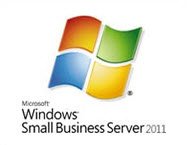

But storage demands and user requirements have changed, especially with the arrival of a new generation of cloud services. SBS Essentials 2011, which supports up to 25 users, is intended for very small offices and branch offices - where in the past businesses would have just deployed a Windows workgroup and perhaps a small NAS for backup and shared storage. For one thing, Microsoft controversially pulled the new version of its Drive Extender storage fabric from the entire 'Colorado' family of servers (the codenames for the second generation Home Server-derived servers were all Colorado place names) - the one technology that differentiated them from more conventional server platforms. Microsoft's new server for very small businesses has seen some changes since last year's beta.

This includes the Windows Small Business Server console.Microsoft recently unveiled a release candidate for Windows Small Business Server 2011 Essentials, the name it's chosen for the server codenamed Aurora. To avoid restarting the computer, exit all applications before you install this update. Restart requirementYou may have to restart the computer after you apply this update. PrerequisitesTo apply this update, you must be running Windows Small Business Server 2011 Standard. How to obtain this updateTo obtain this update, go to the following Microsoft websites: Microsoft makes no warranty, implied or otherwise, about the performance or reliability of these products. The third-party products that this article discusses are manufactured by companies that are independent of Microsoft. The certificate request fails if the certificate provider does not accept requests that contain intranet names or reserved IP addresses.įor example, by July 1, 2012, Go Daddy no longer accept new requests, rekeys, or renewals for SSL certificates that contain intranet names or reserved IP addresses and are valid beyond November 1, 2015. Before the update is installed, the Adding a trusted Certificate wizard adds the internal FQDN of the server (.) as a subject alternative name in the certificate request. The Internet security community is phasing out the usage of intranet names and reserved IP addresses as primary domain names or subject alternative names in SSL certificates. Update: The wizard that is used to add certificates no longer adds the FQDN of the server as a subject alternative name in the certificate requestĪfter the update is installed, the Adding a trusted Certificate wizard in Windows Small Business Server 2011 does not add the internal fully qualified domain name (FQDN) of the server as a subject alternative name in the certificate request. The resource you are looking for might have been removed, has its name changed, or is temporarily unavailable.


 0 kommentar(er)
0 kommentar(er)
